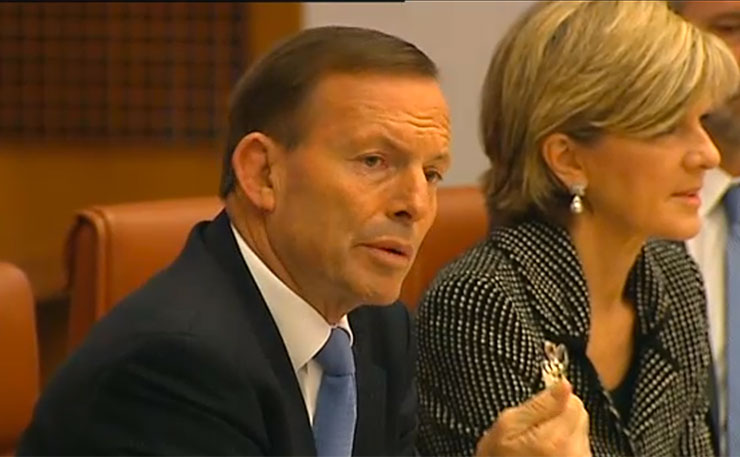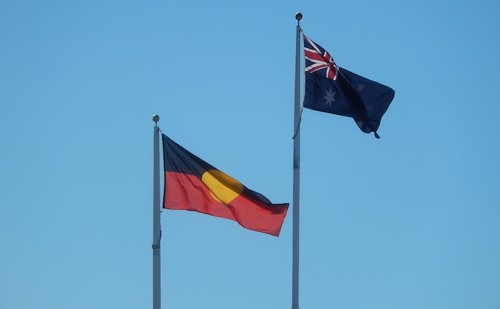On the eve of the PM’s Closing the Gap progress update the Castan Centre has provided further evidence that the dream of an equalitarian Australia is a long way off. Max Chalmers reports.
There’s good news and there’s very, very bad news.
The good news is that Australia is making progress on closing the appalling gap in life expectancy that sees First Nations peoples die on average 10 years younger than their non-Indigenous peers. The bad news is it’s happening so slowly that everybody alive today, black or white, will be long dead by the time the goal is achieved.
According to a staggering new overview of the ‘Closing the Gap’ targets and NT Intervention released by the Castan Centre for Human Rights Law, the disparity in the death rate between First Nations peoples and the rest of the country will not be closed for another 495 years if the current rate of change is not accelerated.
That puts the country on track for parity by the year 2511, 480 years after the target is supposed to be met.
The report, authored by Monash University researcher Dr Stephen Gray, draws on scores of previously compiled reports and data sets to paint a bleak picture of the ongoing efforts to ‘close the gap’ in health, educational and economic outcomes separating First Nations peoples and their peers.
It puts the difference in life expectancy at around 10 years nationally, with First Nations peoples in the Northern Territory expected to live 14.4 years less than other non-Indigenous Australians. While the nation-wide gap had been closing, an increase in the life expectancy of the general population coupled with ongoing and often worsening health problems in First Nations communities has caused the catch-up to slow to a virtual standstill.
According to a 2014 Coalition of Australian Governments (COAG) report, life expectancy for First Nations women in the Northern Territory actually went backwards after 2005, with life expectancy for men just 63 years.

The Close the Gap campaign was adopted by the federal government in 2007 with the aim of helping achieve equality in terms of health and life expectancy within a generation but has not corresponded with improving outcomes across the board. The Prime Minister’s 2015 report admitted just two of the seven campaign targets were “on track” to be met.
2007 also saw the launch of John Howard’s Northern Territory Intervention, continued by the new Labor government under the moniker Stronger Futures.
Dr Gray and the Castan Centre used the report’s findings to deliver the government their own score card on key areas of the Intervention and ‘close the gap’ strategy, returning a fail grade in all areas bar education, which was awarded a 5/10 mark.
The Castan report paints a bleak picture of the impact policies associated with the Intervention have had in the NT, where outcomes remain particularly poor. With an Aboriginal population of around 30 per cent, the Territory boasts a juvenile detention population that is close to 97 per cent Aboriginal. Given numbers like that Dr Gray awarded the intervention a score of 0/10 for lowering incarceration rates, which have continued to rise since the policy was implemented. Despite calls from Labor for ‘justice targets’ to be added to the Closing the Gap framework, and growing anger about the persistent menace of deaths in custody, they have not yet been integrated into the strategy.
Dr Gray told New Matilda he believed there was a “false dichotomy” pitting measures protecting communities from harm against those that could help ease the incarceration crisis.
He said there had been some positives as a result of the Intervention but that there was little evidence the policy was achieving its stated aims.
“There’s certainly a spike in suicide and self-harm and mental health rates,” he said. “I guess from there most people would ask ‘why is that’? Why are we getting this increased mental distress with Indigenous people?
“There is research on the sorts of things that cause people to act in that way, a sense of alienation, a sense that you’re not in control of the decisions that impact your life, and that’s one of the factors. That’s something that does seem to have increased with the Intervention.”

The Castan report notes a 50 per cent increase in hospitalisations as a result of self-harm among First Nations populations since 2004.
Meanwhile, employment outcomes have not only failed to improve but in fact deteriorated, and the report notes the scrapping of the Community Development Employment Projects scheme (CDEP), is likely to help account for this.
“The gap between the Indigenous and non-Indigenous unemployment rates throughout the Northern Territory have widened slightly, from 10 per cent at the start of the Intervention to more than 11 per cent in 2011,” it says.
Dr Gray and his team awarded a 3/10 for efforts to close the gap on employment.
Greens Spokesperson for Aboriginal and Torres Strait Islander Issues Rachel Siewert said measures associated with the NT Intervention should be abandoned.
“Mounting evidence shows measures like compulsory income management and the Basics Card do not reduce disadvantage, and in fact make life more difficult for those forced onto the card. Report after report shows the measure has largely failed in its objectives,” Siewert said in a media release.
“The NT Intervention and Stronger Futures policies have been expensive, wasteful and ineffective, they have not delivered the health, social, education and employment outcomes we need.”
In more positive findings, the Castan report does note that the gap in the rate of students completing a year 12 or equivalent education is shrinking and that child mortality rates are consistently decreasing.
But with Malcolm Turnbull due to deliver the eighth Prime Minister’s report on Closing the Gap on Wednesday, the Castan Centre findings will only place more pressure on the PM to improve the government’s efforts in an area his predecessors have consistently failed.
Donate To New Matilda
New Matilda is a small, independent media outlet. We survive through reader contributions, and never losing a lawsuit. If you got something from this article, giving something back helps us to continue speaking truth to power. Every little bit counts.





